NAVYPEDIA
 Support the project with paypal
Support the project with paypal
Photo

I52
Ships
| Name | No | Yard No | Builder | Laid down | Launched | Comp | Fate |
|---|---|---|---|---|---|---|---|
| 伊52 [I52] (ex-第51号艦 [51-go]), 5.1942- 伊152 [I152] | Kure K K | 2/1922 | 12.6.1922 | 5/1925 | surrendered 8.1945, BU 1948 |
Technical data
| Displacement standard, t | 1390 |
|---|---|
| Displacement normal, t | 1500 / 2500 |
| Length, m | 94.6 pp 100.9 oa |
| Breadth, m | 7.64 |
| Draught, m | 5.14 |
| No of shafts | 2 |
| Machinery | 2 Sulzer diesels / 2 electric motors |
| Power, h. p. | 6800 / 2000 |
| Max speed, kts | 22 / 10 |
| Fuel, t | diesel oil 110 |
| Endurance, nm(kts) | 10000(10)/100(4) |
| Armament | 1 x 1 - 120/45 11-shiki, 1 x 1 - 76/40 3-shiki, 8 - 533 TT (6 bow, 2 stern, 24) |
| Electronic equipment | K-chubu hydrophone |
| Complement | 60 |
| Diving depth operational, m | 60 |
Standard scale images

I52 1941
Graphics
Project history
Kaidai 1 and Kaidai 2 (Large Admiralty 1 and 2) types. Under the "8-8" programme building of several large submarines for joint operations with battle fleet at a great distance from bases was provided. According to Naval staff requirements (10000nm endurance, raised seaworthiness, max surface speed not less than 20kts) in 1919 Naval technical department has started designing of 1500t submarine cruiser. Difficulties which have arisen at designing of so large submarine, have compelled Japanese designers to use British and German experience. For the fullest account of merits and demerits of each of shipbuilding schools it has been decided to build two experimental submarines. As a prototype for the first of them (Kaidai 1) RN cruiser submarine of "K" class (with replacement of a steam turbine by diesels), and for second (Kaidai 2) German submarine cruiser U139 should serve.
Having assumed as a basis drawings of U139, Japanese shipbuilders have significantly redesigned project. For seaworthiness raise buoyancy has been increased, with the same purpose outer hull lines were changed. Surface speed was raised at the expense of fitting of more powerful diesels and increase in hull length. Artillery, in comparison with a prototype, was shrank to 1 120mm/45 gun and 1 76mm/40 AA gun, but number of TTs was increased from 6 to 8. Double-hulled.
Comparative trials of I51 and I52 have revealed preferable characteristics of latter, in particular, she was faster, possessed better seaworthiness, and her engine has appeared more reliably. However I51 had higher endurance and carried more stock of torpedoes.
Planned Nos52-56 (nos53-56 were ordered) were cancelled in 1922 under terms of Washington Treaty.
Modernizations
None
Naval service
Since 1940 I52 was used for training and laid up in August, 1942.
 HOME
HOME FIGHTING SHIPS OF THE WORLD
FIGHTING SHIPS OF THE WORLD JAPAN
JAPAN SUBMARINES
SUBMARINES "Kaidai 2" 1 class submarine (I52) (1925)
"Kaidai 2" 1 class submarine (I52) (1925)
